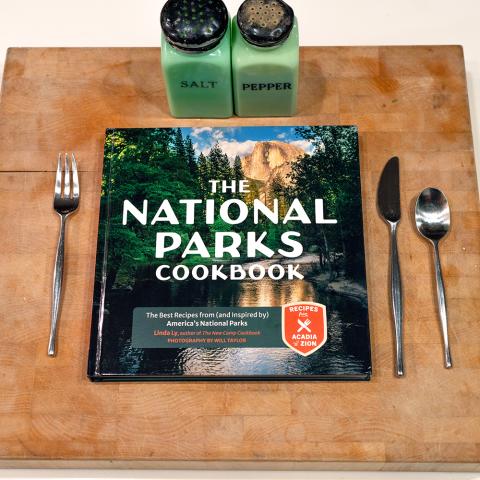
Lone Star Geyser is just one of the highlights of hiking from Old Faithful down to Shoshone Lake / NPS
Fall, which is arguably the best season for hiking in the National Park System, is almost upon us. The cool days and bright colors provide hikers with plenty of incentive to hit the trails.
With that wonderful season in mind, we’ve selected some of the country’s “scenic trails” for your consideration. To those we’ve added a Yellowstone National Park classic, a hike in Canyonlands National Park, and another that traces one of the bloodiest days of the Civil War.
Here's our second hike for this fall:
Howard Eaton Trail To Lone Star Geyser And Shoshone Lake
You can hike this Yellowstone National Park trail for a day, with a turnaround at Lone Star Geyser, or you can continue on down to Shoshone Lake for a wonderful three-four day retreat into the park’s backcountry.
Just across the road from the Old Faithful Medical Center, the Howard Eaton Trail—named after an early outfitter—rambles through a lodgepole forest that still shows signs of the 1988 wildfire that roared through this part of the park. The payoff for day hikers is the geyser. The cone rises 9 feet above the ground. Named by two hunters in 1879, the geyser erupts 35-40 feet about every three hours. Check with the Old Faithful Visitor Education Center for the schedule before heading down the trail.
The Firehole River and its bridge are just feet away from the geyser, and makes a perfect spot for a picnic in the shade. Those looking for a longer trek should continue south towards Shoshone Lake. The hike up and over 8,010-foot Grants Pass (and the Continental Divide) leads you to the shores of the country’s largest backcountry lake not accessible via road.
Squeezed between the Pitchstone Plateau and Craig Pass, at an elevation of 7,791 feet, the seven-mile-long lake has a handful of excellent campsites along the shoreline, and the Shoshone Geyer Basin is in the neighborhood, too.
After you’ve set up camp, walk the shoreline. If you’re interested in geology or volcanism you’ll be amazed at the diverse color and collection of rocks, stones, and gravels to be seen. There are blackish-gray pumices, ruddy scoria, and speckled andesite, along with a mix of rhyolite, obsidian, and basalt.
The Shoshone Geyser Basin is a landscape of fuming steam and spewing boiling water, with features like Bead, Geyser, Black Boiler Spring, Iron Conch Spring, Kitchen Spring and more. The marshy area is rife with waterfowl and the occasional bald eagle looking for a meal.
The day hike to Lone Star Geyser is about a 5-mile roundtrip. The out-and-back trip to Shoshone Lake is about 17 miles.
Helpful books:
Top Trails: Yellowstone & Grand Teton National Parks, by Andrew Dean Nostrum




 Support Essential Coverage of Essential Places
Support Essential Coverage of Essential Places







Comments
Thanks for the great article. Yellowstone is one of my favorite parks!